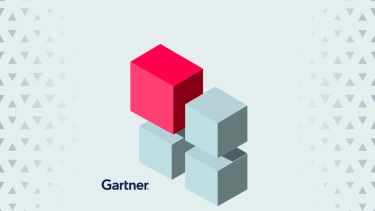Adapt. Scale. Win.

How Alpega’s Modular TMS Helps You Respond to Today’s Supply Chain Pressures
In an era defined by supply chain volatility and economic uncertainty, shippers are under mounting pressure to modernize their transportation operations. Yet, readiness levels vary widely across organizations. Alpega TMS offers a modular, scalable Transportation Management System designed to support shippers at every stage of their digital journey—from basic execution to end-to-end optimization.
This blog explores how Alpega TMS aligns with Gartner’s TMS Complexity Levels (1–5) and how its modular architecture enables companies to digitize incrementally, centralize operations, and gain control—one step at a time, even amidst today’s challenging macroeconomic conditions.
Macroeconomic Pressures Reshaping Logistics
The global supply chain is facing unprecedented disruption, forcing logistics leaders to balance cost efficiency, resilience, and agility all at once. Several macroeconomic forces are compounding these challenges:
- Tariffs and Trade Wars: Evolving trade policies and retaliatory tariffs introduce uncertainty in sourcing, costing, and cross-border logistics.
- Inflation and Rising Costs: Fuel, labor, and equipment expenses remain volatile, requiring tighter cost controls and optimization strategies.
- Supply Chain Disruptions: Port congestion, material shortages, and geopolitical tensions impact availability and service levels.
- ESG and Regulatory Pressure: Increasing expectations for transparency and emissions reduction are driving sustainability initiatives across supply chains.
- Talent Shortages: A shrinking logistics labor pool demands greater reliance on automation and smarter systems.
- Demand Volatility: Fluctuating consumer demand calls for dynamic planning and execution capabilities.
How Alpega’s Modularity Helps You Navigate Uncertainty
Rigid, one-size-fits-all TMS implementations no longer serve modern supply chains. Alpega’s modular approach offers the flexibility to deploy capabilities based on business priorities, evolving needs, and economic conditions.
- Control Costs Without Overhauling Systems
Start with freight procurement, dock scheduling, and rate management to improve cost visibility and identify quick wins. - Digitize Strategically for Maximum ROI
Focus on high-impact modules—like transport planning or dock scheduling—that deliver value without large capital investments. - Scale with Your Business
Easily add modules to handle growing complexity—whether multimodal transport, rule-based transportation planningic invoice verification. - Build Resilience and Manage Risk
Use real-time visibility, compliance, and strategic planning tools to anticipate and respond to disruptions. - Stay Agile Amid Trade Uncertainty
Leverage Alpega’s tendering and international compliance modules to adjust quickly to shifting tariffs and trade policies. - Advance Sustainability Goals at Your Pace
Start measuring emissions with CO₂ tracking modules, ensuring compliance and enabling ESG reporting without replatforming.
Understanding Gartner’s TMS Complexity Levels
Gartner defines five levels of TMS complexity that reflect a shipper’s logistics maturity:
Level 1 – Basic Execution
Manual processes, minimal integration, typically spreadsheet-based.
Level 2 – Core TMS
Basic planning and visibility, often focused on domestic operations.
Level 3 – Multimodal, Multi-leg
More advanced planning across regions and transportation modes.
Level 4 – Network Collaboration
Deep integration with carriers, partners, and customers.
Level 5 – End-to-End Optimization
Holistic logistics management with predictive analytics and automation.
How Alpega TMS Supports Every Level of Complexity
Level 1 – Simplifying Execution
Modules: Transport Execution
Value:
- Replace manual workflows
- Gain shipment visibility
- Role-based data access
- Create an auditable transportation process
- Tap into Europe’s largest Carrier Network
Level 2 – Building a Core TMS Foundation
Modules: Transport Planning, Rate Management, Carrier Portal
Value:
- Automate load planning and carrier selection
- Centralize rate and performance data
- Analyze costs and service metrics
Level 3 – Managing Modal and Regional Complexity
Modules: Multimodal Planning, International Compliance, Cost Allocation
Value:
- Manage road, rail, sea, and air within one platform
- Ensure cross-border compliance
- Allocate costs across units or regions
Level 4 – Creating a Collaborative Network
Modules: Collaboration Portal, Real-Time Visibility, Dock Scheduling
Value:
- Collaborate with partners in real time
- Optimize load assignment and confirmation
- Improve proactive communication and responsiveness
Level 5 – Driving End-to-End Optimization
Modules: Predictive Analytics, Scenario Planning, Sustainability Tracking
Value:
- Optimize transports
- Simulate “what-if” supply chain scenarios
- Monitor and reduce carbon emissions
The Benefits of a Modular TMS Strategy
- Start Small, Scale Smart
Deploy only the modules you need and expand at your own pace. - Realize ROI Faster
Achieve quick wins and avoid the risks of large, disruptive implementations. - Customize to Fit Your Business
Tailor the system to specific geographies, industries, or operational models. - Accelerate Digital Maturity
Bridge the gap between where you are and where you need to be—incrementally. - Future-Proof Your Investment
Built on a cloud-native architecture, Alpega TMS evolves with your business and the market.
Conclusion: Agility Is the New Advantage
In today’s volatile logistics environment, flexibility is more than a nice-to-have—it’s essential. Alpega TMS helps shippers adapt fast, grow smart, and stay in control, no matter their size or complexity. With modularity at its core, Alpega is a partner for the long term—supporting your transformation at every stage, in every market condition.